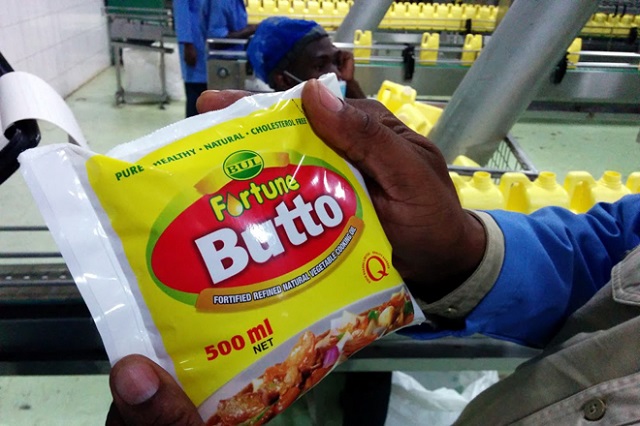
Kampala, Uganda | THE INDEPENDENT | The recent introduction of a 200 Shillings levy on each litre of cooking oil, and the 10 percent import duty on crude palm oil are responsible for the increase in prices of edible oils, cleaning products, and personal care items according to manufacturers.
Crude palm oil prices hit record highs in May 2021, along with soybean oil, sunflower oil and other soft oils, which compete for a share in the vegetable oils market. The prices in Uganda have increased to USD1,300 (4.6 million Shillings) per metric tonne, from USD500 (1.8 million Shillings) two years ago.
A kilogramme of the same was selling at Shillings 3,929 this year, from 3,460 Shillings over the last two years, affecting prices of several household products in recent weeks.
A bar of soap which was recently sold at 3,500 Shillings is now sold at not less than 4,000 Shillings at major outlets in Kampala, while a litre of cooking oil has increased from 5000 to 8,000 Shillings. Increases are also seen in the cost of margarine and other edible oils whose costing has gone up by at least 2000 Shillings.
Anoop Sharma, the managing director of Bidco, a leading producer of oil products in Uganda says the increment is also seen in all other raw materials used in the production of the products. Sharma adds that with the persistent lockdowns and restrictions brought by the COVID-19 pandemic, shipping lines are hardly available and those that exist have increased fares by 300 percent.
This he says makes transportation costly and drives the cost of production through the ceiling, especially now that the government introduced a 10 percent import levy on raw material as a measure for import substitution.
According to Anoop, the measure is self-defeating because while Uganda has increased its production of palms, the Kalangala Palm Oil Project can only supply 3,000 to 4,000 metric tonnes yet the local demand stands at about 15,000 metric tonnes.
Mukwano Industries Chief Executive Officer Tony Gadhoke, says that with the crisis in crude oil palm products, cereal oils like sunflower and soybean would have been a good substitute. However, their production remains at the lowest.
He says that Ugandan manufacturers who have been subjected to excise duty of 200 Shillings per litre of produced oil, compete for cereals with other East African counterparts who don’t have such tax in their countries. He says they continue to appeal to the government to abandon the tax.
Dhirender Singh, the spokesperson of Mount Meru Group of companies says that the Ugandan market prefers palm oil products to sunflower products.
Meanwhile, the FAO Food Price Index, which tracks the international prices of a basket of food commodities, shows that prices for a wide range of items are up by 3.9 percent from September, rising for a third consecutive month.
Cereal prices overall increased by 3.2 percent, due to reduced harvests in major exporting nations. However, compared to last year, global cereal production for 2021, is anticipated to increase and reach a new record level of some 2,793 million tonnes.
World cereal consumption for 2021/22 is heading towards a 1.7 percent gain, led by an anticipated increase in global food consumption of wheat, rising in tandem with a growing global population. The vegetable oil index went up 9.6 percent, hitting an all-time high, and dairy rose by 2.6 points, with increased demand for butter, skimmed milk powder and whole milk powder, as buyers try to replenish low stocks.
******
URN
 The Independent Uganda: You get the Truth we Pay the Price
The Independent Uganda: You get the Truth we Pay the Price


